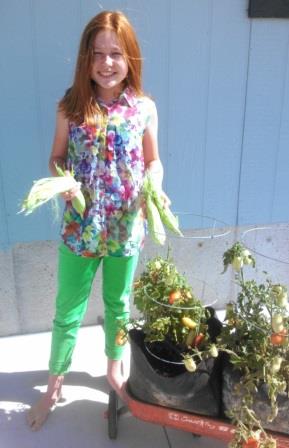August is Family Meals Month.
Studies have identified many benefits of family dinners for children, including:
- Better academic performance
- Higher self-esteem
- Lower risk of substance abuse (drugs, cigarettes, alcohol)
- Lower rates of obesity and eating disorders
- Eating more fruits and vegetables, and less soda and fried foods
While some of these benefits have been debated (mostly around the issue of correlation vs. causality), on a basic level, family meals can strengthen your relationship with each other and with your food. From meal prep to cleanup, family mealtime is a wonderful opportunity to cultivate a “real food” culture in your home, and to lay the foundation for lifelong health and wellness.
Build Relationships with Your Food & With Each Other
In a world where we are increasingly pressed for time and pulled in different directions, making mealtime a family affair is a deliberate choice. In many ways, meals are the glue that binds us together. Our most important relationships are established and strengthened over meals.
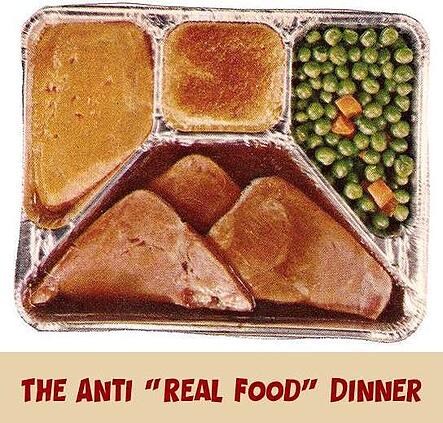
Your dinner table is set with food that may reflect your culture, interests, and priorities. The constraints you set at the table, in terms of rules and manners, also reflect who you are as a family. If you say grace every night at the table before taking the first bite, that contextualizes your family and your dinner in the larger scheme of things and can strengthen your family identity.
Stopping to give thanks for the days blessings (including the food on your plate) and acknowledging where your food came from deepens the appreciation for what you eat. It’s the difference between mindlessly shoveling food in your mouth and valuing it strictly based on whether or not it tastes good, versus stopping to appreciate your food based on a variety of attributes — including taste — but also nutritional value and the life, time and work that was put into it before it reached your plate.
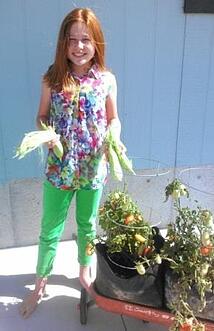
By making a point to acknowledge how fortunate we are to have fresh vegetables on our plate and clean water in our cups, our children may realize how truly lucky we are to have everything we need to grow up healthy, if we make smart choices about our food. Many other people don’t have the choices we have.
At my house, the emphasis is on creating positive relationships with our food, and with each other. We encourage laughing at the table, and value having fun more than “being proper,” (though we do draw a line at talking with your mouth full). During the day we are all doing our own things, so dinner time is for unplugging and taking time to focus on each other.
When I cook, the dinner tends to be healthier but strictly functional (they all tease me that I can’t make a meal without a recipe). When my husband cooks, dinner tends to be delicious but not as well-balanced (think grilled ribs and smoked chicken legs). It’s a work in progress. Dinner is one of my favorite parts of the day. I know I’m giving my family something better than fast food, and I’m doing it because I love them. Even when the food is unexciting (meaning I cooked), it doesn’t matter because we still have the time together as a family. That’s more important than the food on my plate. I like to eat slowly and savor every bite — not only of the food — but also of the conversation. Tomorrow is not guaranteed, but today, in this moment, I don’t want to miss a single minute that I can get with my family.
Tips to Cultivate a “Real Food” Culture and Appreciation for Food
If you want your kids to appreciate their food, you have to get them involved with the meal long before it’s on the table. Here are a few ideas to support healthy eating habits and positive relationships with food in your family.
Gardening. The first step of mealtime planning starts months in advance, with gardening. At this time of year, depending where you live, it may be too late to get anything planted, but getting kids involved in the process of planting seeds, cultivating plants, and watching them grow over time deepens their appreciation and respect for plant foods. Because they are invested in their home-grown plants, they may be more likely to eat them.
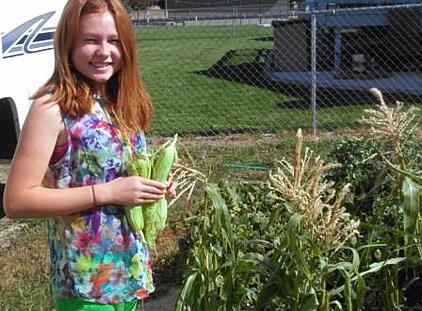
The health benefits of gardening for kids and families may be even greater than those of eating family dinners (See research compiled by Cornell University). With container gardens and community gardens available, no matter where you live you can plant something- even if it’s just a tomato plant. Don’t have time for planting? You can still help your kids understand that food is not made at the grocery store by spending a day at a pick-your-own farm (and fall is perfect for apple picking!).
Shopping. When grocery shopping, bring your kids with you and let them pick some fruits and vegetables. Allow them to feel empowered by making their own choices. You can also talk to them about what you’re looking for on food labels, or why you might choose organic grapes, but non-organic bananas. Bring them with you to the local farmer’s market and talk to them about fresh vs. processed food. It will help shape the way they think about their food choices.
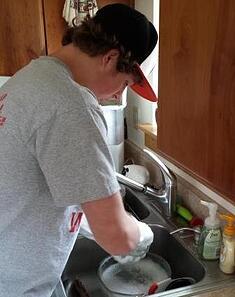
Food prep. Get them involved with cooking and clean up. This really turns mealtime into a family activity. Even small children can help with things like juicing, picking stems off of herbs, husking corn, scrubbing potatoes, measuring ingredients, stirring and spinning. As they get older, their jobs can evolve to match their capabilities. Cooking can be a lot of fun, and it integrates art as well as math and science. Plus, when they help make it, they are more likely to eat it.
Presentation. Many “kid foods” have bright colors and packaging but little nutritional value. However, there are ways to incorporate fun presentation into foods that are actually nutritious. A perfect example is the Japanese bento box trend, which is conducive to healthy food choices with typical components including boiled eggs, fresh fruits and veggies, and sandwiches in fun cut-outs. By cutting cute shapes into their food, it makes meals more fun for the kids and they are more likely to eat it. Here’s an example of a Pinterest board that features some more healthy kids food ideas, including bento boxes.
Marketing. Kids are not moved by terms like “good for you,” “healthy” and “nutritious.” And some may fear anything that sounds unfamiliar. In fact, it may turn them off. So use your marketing skills and spin the benefits of food in terms that make sense for them. For example, “All of the best ninjas eat asparagus. It helps them jump super high.” In our house, we never had quiche, but we did have “cheesy egg pie.”
How do you make meal time special for your family? Do you do anything special to encourage appreciation for real food in your home? Let us know in the comments!
More from The Bread Business Blog on getting kids to eat healthy:
- The Path to Healthy Eating Starts with Kids Cooking Real Food
- 5 Healthy Tips from Our Bakery Nutritionist for Parents
- Kids Will Eat Whole Wheat Bread – If It Tastes Great!
- Healthy Kids Day
Find something to make with your kids tonight:
Additional Resources:
- The Family Dinner Project
- Gardening Research (Cornell University Cooperative Extension)
- Parenting in Context: Do Family Meals Really Make a Difference? (Cornell University College of Human Ecology)
- 8 Reasons to Make Time for Family Dinner (Health.com)
- Pinterest Board for Quick Kid’s Cooking Inspiration
- Pick-Your-Own.org
Photo Credit: Adrigu “tv dinner 1,” https://flic.kr/p/6AMLDF
